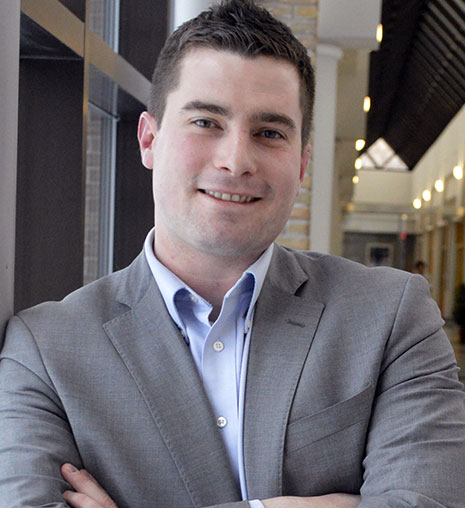Editor’s note: The second in a two-part series on how superintendents are preparing for budget cuts due to the coronavirus pandemic, while lobbying for financial relief from state and federal legislatures. Read the first story here.
Skyrocketing unemployment. Shuttered businesses. An economy shakier than any in recent memory. The impacts of the coronavirus pandemic are hitting every industry and sector of society.
So what does that mean for schools? Reports by economists at the May 15 Michigan Consensus Revenue Estimating Conference, a biannual meeting where officials from the Michigan Treasury Department, Senate Fiscal Agency and House Fiscal Agency confer on revenue projections, indicated revenues collected for the Michigan School Aid Fund would fall $1.3 billion short of previous projections.
“If there are guidelines we have to adhere to (in order) to open, we may have to look at areas we’ve never had to look at. Think about it this way. Are we going to be able to transport 50 kids on a bus, have sports, bands?”
— Chris Glass, director of legislative affairs for the West Michigan Talent Triangle

That means cuts to schools could amount to $700 per pupil, a hit much larger than $470 per-pupil reduction in 2011-12 during the Great Recession. In fact, the shock to the Michigan economy caused by the pandemic could result in twice the size of the state’s largest one-time revenue loss during the recession in 2009.
A Big Decline in Revenue
For districts that receive minimum per pupil funding of $8,111, a $700 cut would leave $7,411 per pupil for both this year and next. Local superintendents are calling that unacceptable and seeking help from legislatures, banding together to call for no cuts this year or next.
(The revenue districts rely on from the state is based on tax collection through Oct. 1. The State of Michigan’s budget year is Oct. 1 to Sept. 30, though the public schools’ is July 1 to June 30. Because state and school districts’ fiscal years aren’t aligned, districts typically still receive state aid payments in July and August for the just-ended school year.)
The school leaders are joined by Michigan legislators from both parties who are calling for the federal government to cover the shortfall and provide more relief money to schools. Glass said of the $2 trillion allocation under the CARES Act from Washington, less than 1% ($16.5 billion) was allocated for K-12 purposes. Flexibility in the $3.1 billion already allocated to Michigan under the act would also help. Congress would have to take action making it allowable to use these funds to fill budget shortfalls.
“We are trying to say there is additional support that is warranted and needed — we think there should be more allocated to public schools so they can open safely and serve the needs of students,” Glass said.
The new school environment — districts are planning for different scenarios likely to include a blend of in-person and remote learning — would require additional resources rather than fewer, he said. For example, when schools face shortfalls they often increase class sizes to help balance their budgets. Social distancing doesn’t allow that. Depending on health conditions and guidelines, decreased class sizes may be required.
“We need to push for funding at a federal level to mitigate the budget shortfall that schools are facing,” Glass said.
“If there are guidelines we have to adhere to (in order) to open, we may have to look at areas we’ve never had to look at,” he added. “Think about it this way. Are we going to be able to transport 50 kids on a bus, have sports, bands?”
“Our elected officials need to put children first. We will fight hard to protect the interests of the children and families that we represent.”
— Rockford Public Schools Superintendent Michael Shibler

Years of Funding Reductions Expected
GRPS school board members got a first glimpse of the potential blow to their budget in a work session Monday, May 18. A $700 per-pupil state funding cut would mean about a $10.5 million loss in this year’s $232 million budget as well as in the 2020-21 budget, said Chief Financial Officer Larry Oberst. The district’s $8.3 million fund balance and federal CARES Act funds will not be enough to cover that, he said.
Oberst told the board they should expect funding reductions will continue for at least three years.
“You’re not going to make up a $700 per student cut in one year,” Oberst said, noting it took about seven years to recover from the Great Recession cuts. “This is more than that and it will likely take at least that long to get back to where we’re at. It’s going to be challenging for the next number of years, and we’ll see what we can do to soften the cuts made to the classroom.”
What’s more, GRPS is incurring new costs required for operating schools in a pandemic, such as personal protective equipment, face masks and monitoring student and staff health, said John Helmholdt, spokesperson for Grand Rapids Public Schools. Just what school will look like in the fall isn’t yet known, throwing a huge variable into what cuts would be required.
“There’s nothing that’s not on the table for consideration,” Helmholdt said. “Our priority number one is going to be the safety, health and well-being of our students, our staff and any parents and visitors to our buildings.”

United Voices Needed
Helmholdt said officials need to push for more state and federal relief. The American Recovery and Reinvestment Act of 2009, which provided more than $800 billion in stimulus during the Great Recession, provided “substantially more relief” to schools than the CARES Act provides, he said.
Besides lobbying for more federal funds, GRPS will advocate for more state funding for high-poverty, high-needs districts, and that per-pupil reductions should be made by percentage, not a flat dollar amount, he said. The district will mount an advocacy campaign to include parents, staff and even students, he said.
“There needs to be a loud and united voice to the state,” he said, “and ultimately to the Congress and the president.”









